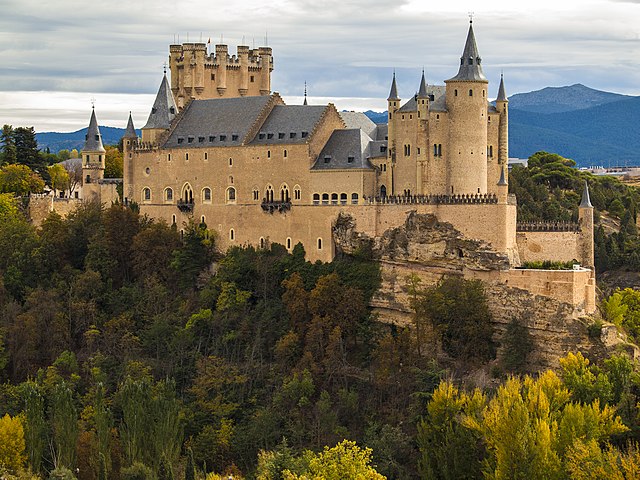A postern is a secondary door or gate in a fortification such as a city wall or castle curtain wall. Posterns were often located in a concealed location which allowed the occupants to come and go inconspicuously. In the event of a siege, a postern could act as a sally port, allowing defenders to make a sortie on the besiegers. Placed in a less exposed, less visible location, they were usually relatively small, and therefore easily defensible.
North Street Postern Tower (aka Barker Tower), York
Postern in the rampart of Provins, Seine-et-Marne, France
A castle is a type of fortified structure built during the Middle Ages predominantly by the nobility or royalty and by military orders. Scholars usually consider a castle to be the private fortified residence of a lord or noble. This is distinct from a mansion, palace and villa, whose main purpose was exclusively for pleasance and are not primarily fortresses but may be fortified. Use of the term has varied over time and, sometimes, has also been applied to structures such as hill forts and 19th- and 20th-century homes built to resemble castles. Over the Middle Ages, when genuine castles were built, they took on a great many forms with many different features, although some, such as curtain walls, arrowslits, and portcullises, were commonplace.
Dating back to the early 12th century, the Alcázar of Segovia, Spain, is one of the most distinctive castles in Europe.
Built in 1385, Bodiam Castle in East Sussex, England, is surrounded by a water-filled moat
The Norman White Tower, the keep of the Tower of London, exemplifies all uses of a castle including city defence, a residence, and a place of refuge in times of crisis.
Windsor Castle in England was founded as a fortification during the Norman Conquest and was one of the principal official residences of Queen Elizabeth II during her reign.






